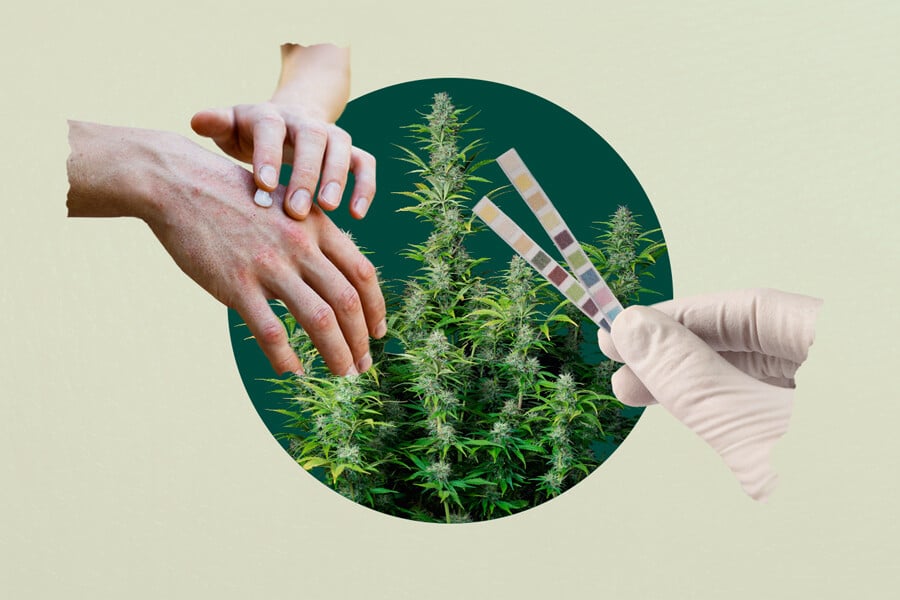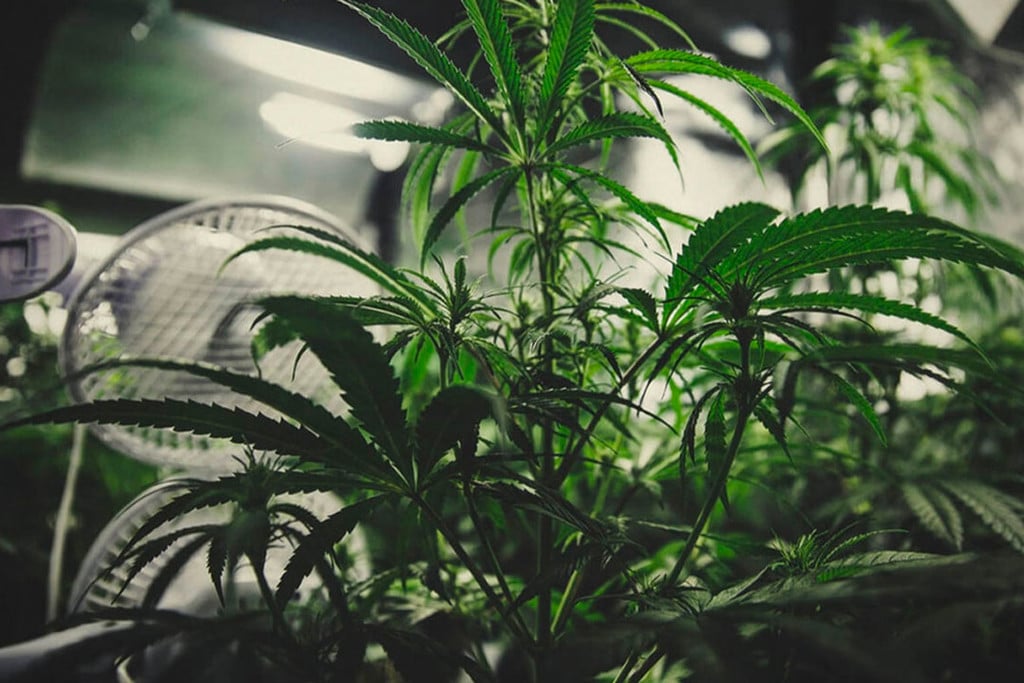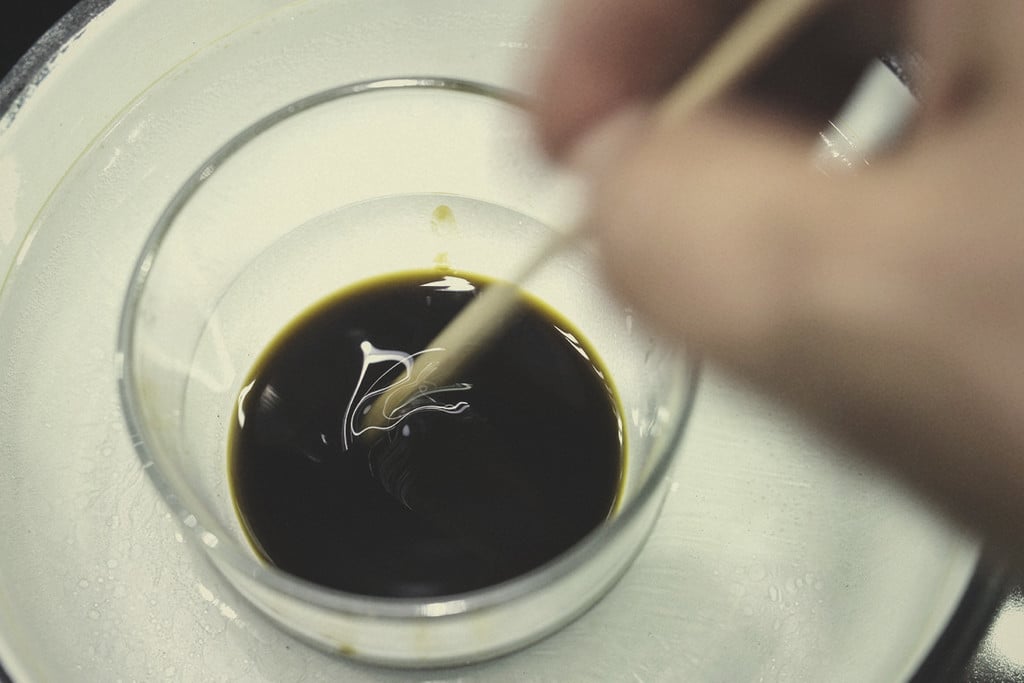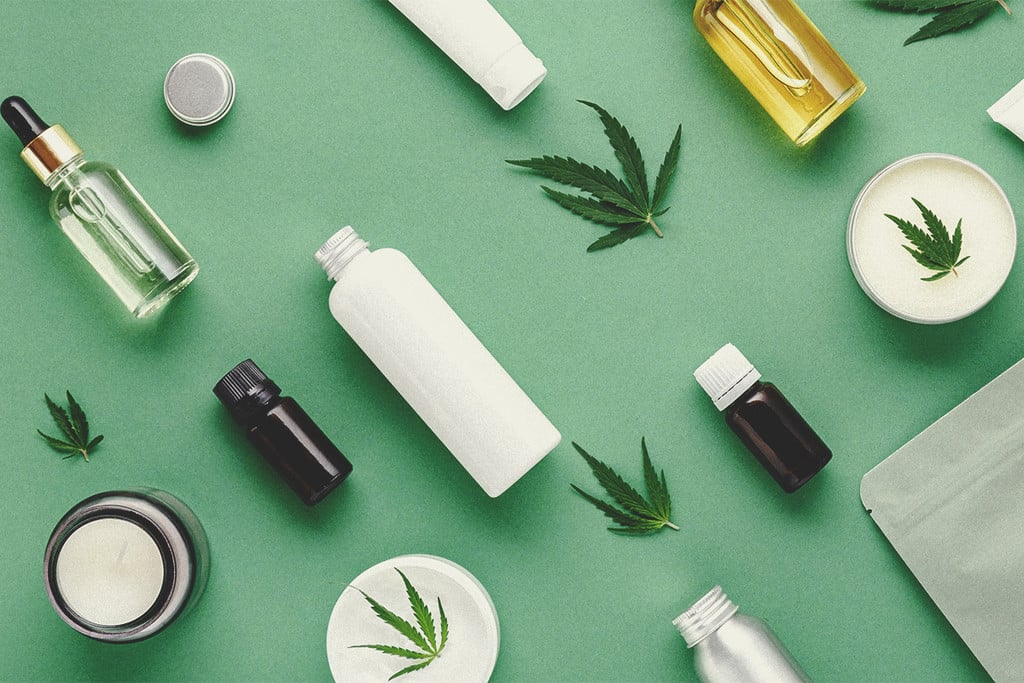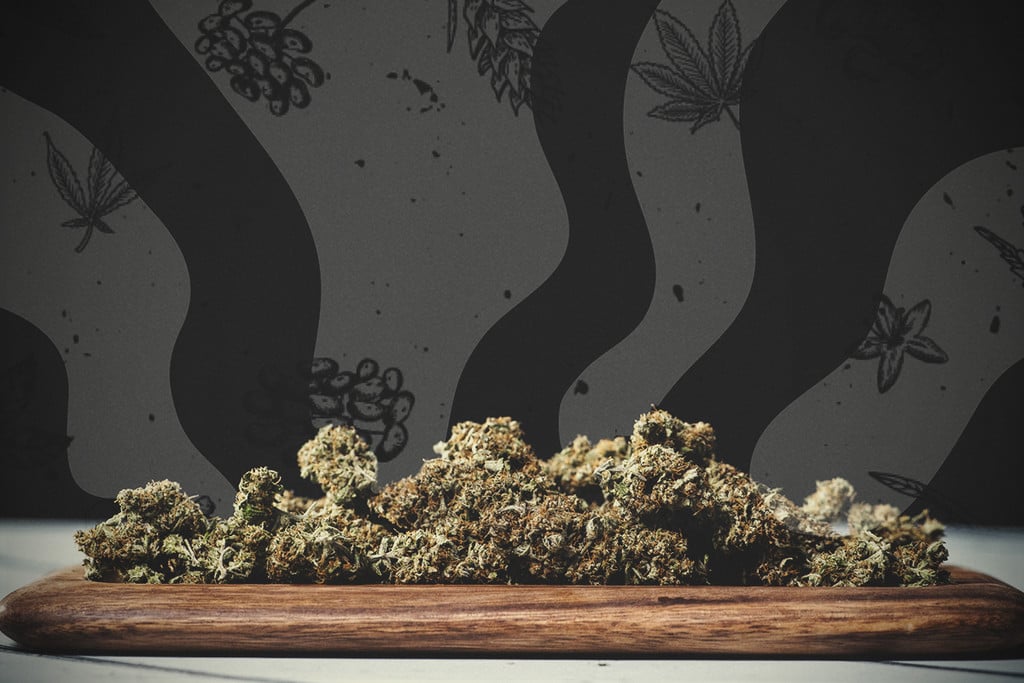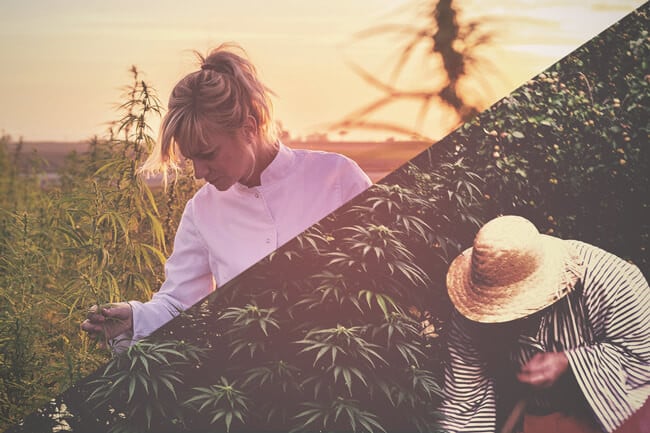.
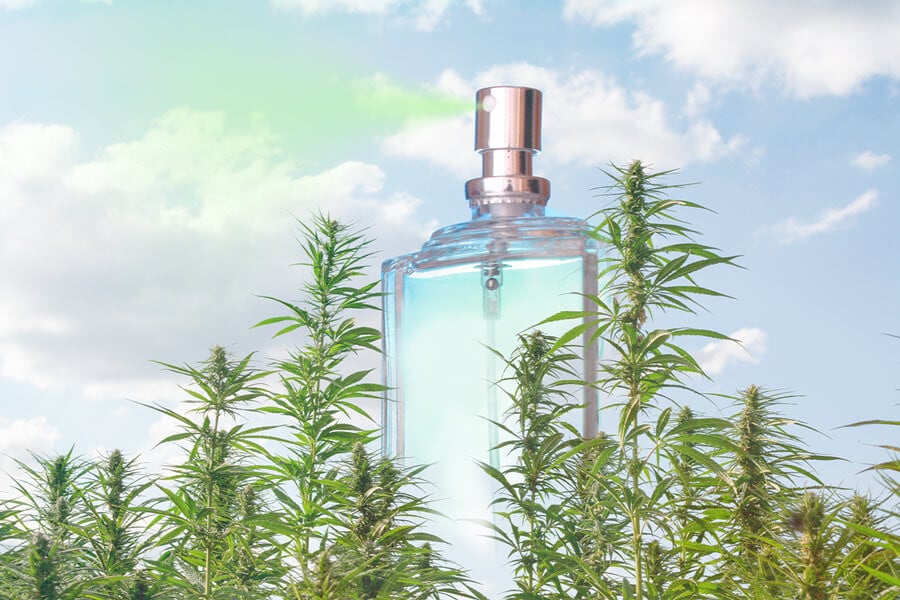
Cannabis Perfume: A Blossoming Fragrance Product
Cannabis has gained a reputation as one of the most aromatic plants on Earth. Considering most perfumes are based on botanical ingredients, it makes sense that companies are starting to make perfume blends using the herb. Below, you'll discover the key aromatic compounds in weed, existing cannabis perfume products, and how to make your own.
The cannabis plant is an increasingly common feature in the sectors of well-being, cosmetics, and even clothing. Now, a handful of companies are introducing the herb into the world of perfumes. Read on to discover what cannabis perfume products are currently available, and how to make your own hemp-infused fragrances at home.
The Botanical Roots of Perfume: A History
Worldwide sales of perfume topped $40 billion in 2022. The modern perfume industry is gigantic, and the highly competitive marketplace has fostered innovation in every area, from bottle design and sustainability to biotech research intent on discovering and experimenting with new aromas.
However, perfume itself has much more humble beginnings. The Cambridge Dictionary defines[1] perfume as: “A liquid with a pleasant smell, usually made from oils taken from flowers or species and often used on the skin”. Sounds pretty simple, right?
The simple nature of perfume means that humans have made and applied it for thousands of years. The contemporary word stems from the Latin “per fumus”, meaning “through smoke”. The oldest known written record of the use of perfume reaches back to inscriptions on a Mesopotamian cuneiform tablet dating to 1200 BCE. This archaeological finding speaks of the first recorded chemist—a woman named Tapputi—an overseer at the Royal Palace who developed techniques of scent extraction from plants.
Perfume has also experienced extensive use in South Asia. Here, ancient Ayurvedic texts speak of the distillation of ittar, a fragrant essential oil distilled from botanical sources.
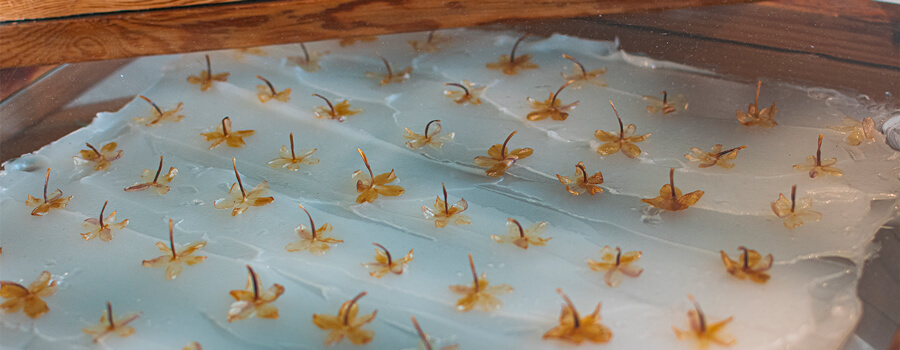
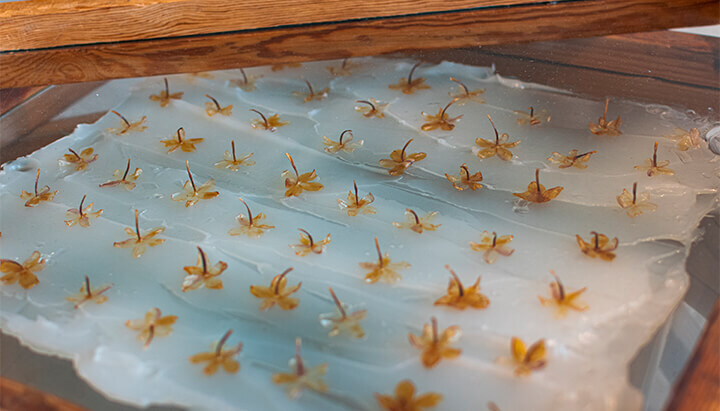
On the island of Cyprus, perfumery dates back to the Bronze Age. Excavations point to a large facility, operational 4,000 years ago, that produced perfume on a large scale on a 0.4-hectare site.
In Europe, citizens of Hungary produced the first modern perfume, drawing inspiration from Islamic tradition. Crafted from botanical scents and alcohol solutions, it became known throughout Europe as “Hungary water” after its formulation in 1370.
A handful of aromatic plants are typically used to make perfume, including the likes of lavender, gardenia, eucalyptus, lemon, tobacco, jasmine, and torchwood. These botanicals are packed with aromatic secondary metabolites produced to fend off pests and diseases and to increase the plant's chance of survival. However, as it happens, many of these molecules smell sublime to the human nose. But many other plant species make good candidates for crafting pleasant odours—including cannabis.
Cannabis: A Source of Aromatic Compounds
Cannabis has gained recognition across the world as a psychoactive herb. The principal constituent THC is chiefly behind the plant's euphoric effect. However, cannabis flowers contain many other secondary metabolites that often get overlooked, including over 100 other cannabinoids and over 150 terpenes.
Anyone who has grown or smoked cannabis is familiar with its distinct aroma. Continue reading to discover the key aromatic constituents of marijuana, before learning about the developing world of weed perfume and how to make it yourself.
Terpenes
Terpenes are a large group of aromatic molecules found throughout nature. Researchers have identified over 30,000 of these molecules in a host of different plants, with over 150 existing in cannabis flowers. Each of these molecules lends a distinct aroma to particular cannabis strains, from sweet and floral to fruity and earthy. Terpenes are categorised into different groups depending on their structure. Below are the two major groups of aromatic terpenes within cannabis:
- Monoterpenes: Terpenes are made up of smaller structures known as isoprene units—branched chains featuring five-carbon units. Monoterpenes, at their foundation, are made up of two isoprene units, making them the most simple terpene molecules. Monoterpenes are pungent and volatile, and include the likes of limonene—which provides aromas of citrus—and myrcene, which supplies notes of earthiness. Pinene and terpinolene are also monoterpenes found in cannabis flowers. The former smells of pine, whereas the latter exhibits a floral and sweet scent.
- Sesquiterpenes: This category of terpenes possesses three isoprene units. They are larger than monoterpenes but are also volatile and highly aromatic. These compounds include the peppery caryophyllene and the herbal farnesene.
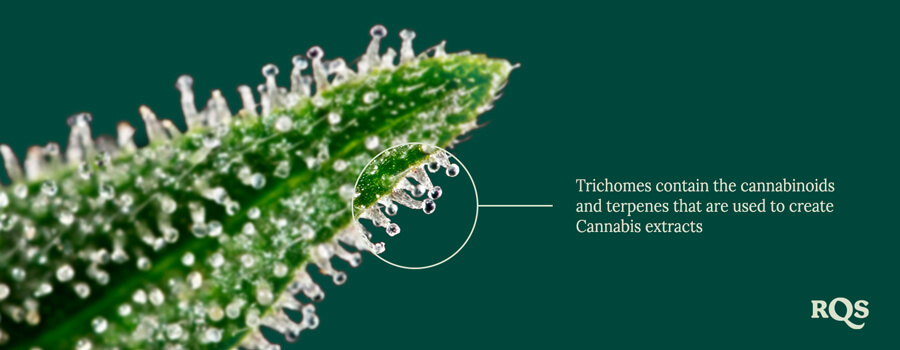
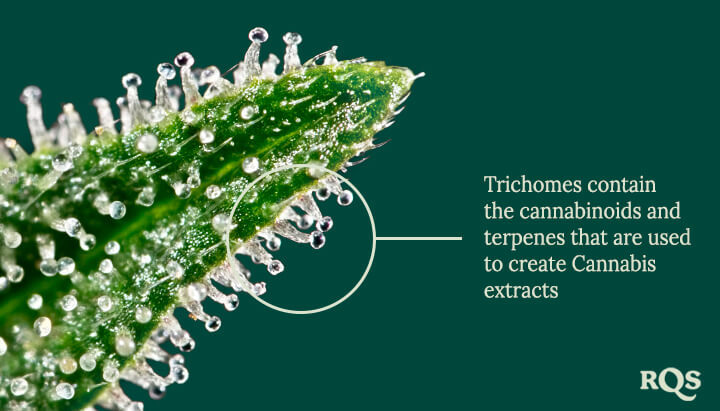
Volatile Sulphur Compounds
Terpenes get most of the credit when it comes to the unique scent of each cannabis strain. However, volatile sulphur compounds (VSCs) also play a fundamental role. As well as underpinning the skunk-like aroma of many cultivars, VSCs also contribute scents of tropical fruit, sweetness, and savouriness. Some of the VSCs[2] present in cannabis flowers include:
- Dimethyl sulfide
- 3-Methylthiophene
- 3-methyl-2-butene-1-thiol
Esters
Esters are organic compounds that produce alcohol and organic and inorganic acids when they react with water. Weed flowers are a source of esters, and cannabis researchers are becoming increasingly compelled to investigate them. While largely underlooked until recently, these compounds contribute distinct aromas to certain strains, including scents of banana, strawberry, and pineapple.
The Emergence of Cannabis in Perfumery
As a botanical packed with aromatic compounds, it’s no wonder that perfume companies are turning to cannabis as a source of fragrance. The novelty of cannabis to the industry also serves as an attractive selling point to those who already love the herb, and those who are curious about its unique aromas.
Although cannabis perfumes are just emerging, a handful of products are currently available on store shelves. High-end cannabis perfumes include Fragrance du Bois’ Cannabis Blue, an expertly crafted formula that fetches a hefty price of £249. However, slightly more affordable cannabis fragrances are also available. The aptly named “Cannabis” by Malin & Goetz provides herbaceous hints with notes of flowers and smoke, and sells for £86. Those seeking a more budget-friendly product can still wear the scent of weed by spraying on Cannabis Garden by Dermacol, a formula packed with terpenes found in marijuana that offers notes of cannabis and jasmine, and sells for £18.20.
If consumers display enough preference and demand for cannabis perfumes, we’ll likely see major brands start to incorporate the herb in their formulas, too.
What Are the Effects of Cannabis Perfume?
Given the cannabis plant’s association with the psychotropic cannabinoid THC, there is some speculation over the potential effects of cannabis perfumes. However, these formulations only contain aromatic constituents, which THC is not. Furthermore, cannabis perfume is not ingested, which is how THC exhibits its euphoric effects. It’s understandable that consumers might immediately associate cannabis perfume with getting high, but that’s nothing short of a misunderstanding.
All that said, cannabis perfumes contain a range of molecules that science suggests can produce a subtle cognitive effect, from relaxation to clear-headedness. Inhaled pinene, myrcene, and beta-caryophyllene, for example, are known to impact the biochemistry of the body and brain.
Can Weed Perfume Get You High?
THC lays the foundations of the cannabis high. While terpenes synergise with THC to steer the effect of each strain, they produce no substantial intoxicating effects themselves. And since cannabinoids aren’t included in perfumes, these products do not produce a psychoactive effect.
How to Make Marijuana Perfume at Home
Now you’re aware of the emergence of cannabis perfume and the key aromatic constituents within the plant itself. If you like the sound of a weed-inspired fragrance, know that you can make your own at home! Check out the ingredients you need below, and find out how to combine them into a fresh and floral fragrance.
Ingredients & Equipment
Grab the following gear and ingredients:
- Hemp essential oil: You can easily find hemp essential oils online. Hemp and cannabis are essentially the same plant, yet hemp is legal in many countries because of its extremely low levels of THC. However, this oil contains all of the terpenes found in cannabis plants grown for recreational or medical use.
- Jojoba oil: Derived from the seeds of the jojoba plant, this substance works as a carrier oil within the perfume formula.
- Alcohol: Use either vodka or perfume alcohol. Alcohol helps to preserve and stabilise perfume and also helps it to disperse throughout the air.
- Distilled water: This ingredient helps to clarify and dilute the formula.
- 100ml glass perfume bottle: Get yourself a glass bottle with a screw cap pump so you can use your marijuana perfume right away.
- Glass mixing bowl: Use this to mix your formula together.
- Small pipette or air syringe: Useful for transferring your perfume into its bottle.
Directions
Now that you have everything you need, here’s how to put it all together to make your own hemp perfume:
- Add 60ml (4 tablespoons) of jojoba oil into a mixing bowl.
- Add 4ml (around 80 drops) of your hemp essential oil into the bowl.
- Add 30ml (2 tablespoons) of vodka or perfumer's alcohol into the bowl.
- Next, pour 6ml of distilled water into your blend.
- Stir your formula thoroughly and let it sit for 10 minutes.
- Use a small pipette or air syringe to transfer your blend into its bottle.
Make sure to store your marijuana perfume in a cool, dark place to keep it preserved for as long as possible. Feel free to mix up different hemp essential oil blends and carrier oils until you pinpoint a fragrance that really works for you.
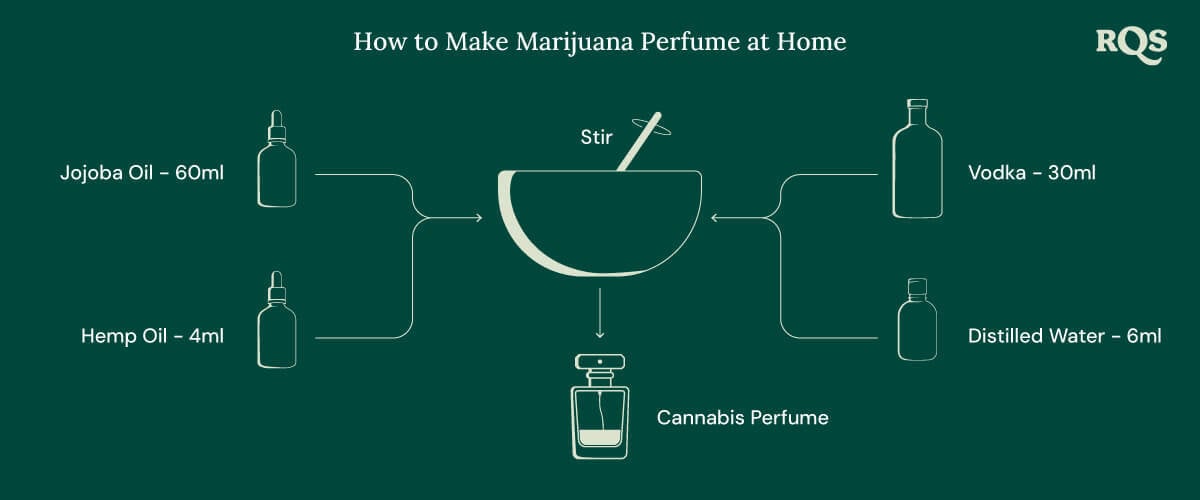
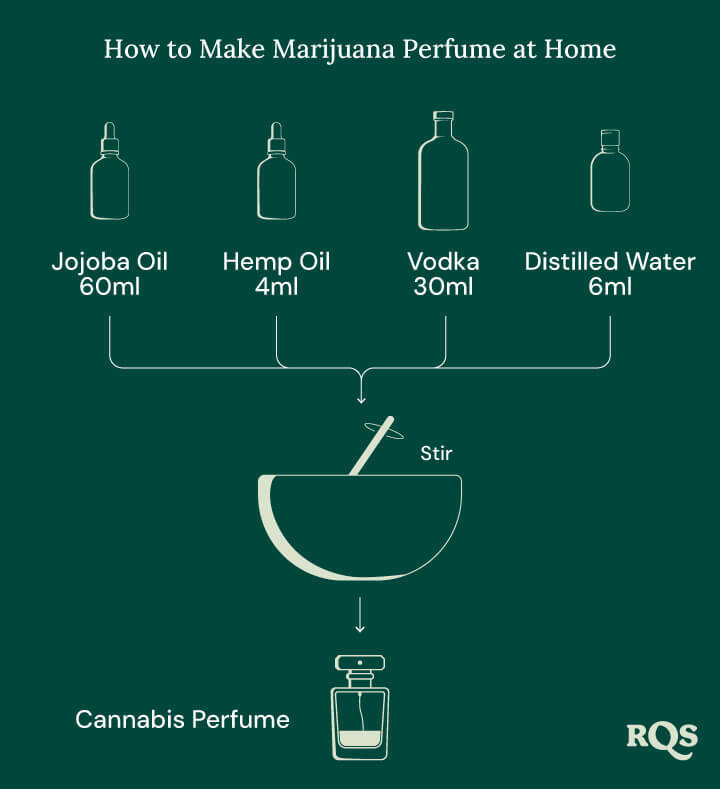
Ganja Cologne: The Next Big Thing in the World of Perfume?
The burgeoning cannabis industry has already penetrated the cosmetics sector, and now it’s making waves in the perfume sector, too. A range of ganja colognes already exist on the market, from expensive high-end options to more affordable fragrances. Despite their price differences, these blends share one thing in common: plenty of aromatic cannabis-derived molecules. If you’d rather make your own, you’re now fully equipped to create unique formulas using hemp essential oil and other easy-to-source ingredients.
- PERFUME | English meaning - Cambridge Dictionary https://dictionary.cambridge.org
- Identification of a New Family of Prenylated Volatile Sulfur Compounds https://pubs.acs.org


























